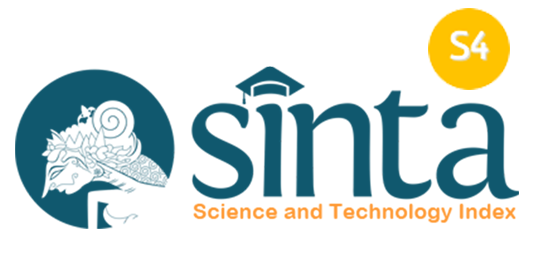Comparison of Modeling Volatility of Indonesia Banks Using ARCH, GARCH, TARCH and EGARCH
Abstract
ABSTRACT
According to the rating of PEFINDO, there are 10 biggest Banks in Indonesia which dominate 65.2% of the total asset. From this rating, writer examine the best fitted volatility model using ARCH, GARCH, TARCH and EGARH. The result from R-Squared, AIC and SIC, all of the bank have good fitted volatility with EGARCH model, but when writer double checking for the EGACRH model with time series diagnostic checking and fitted model performance measurement, the result show that not all of the banks is fitted volatility by EGARCH model.
ABSTRAK
Menurut peringkat PEFINDO, ada 10 Bank terbesar di Indonesia yang mendominasi 65,2% dari total aset. Dari peringkat ini, penulis menguji model volatilitas yang paling cocok menggunakan ARCH, GARCH, TARCH dan EGARH. Hasil dari R-Squared, AIC dan SIC, semua Bank memiliki volatilitas yang sesuai dengan model EGARCH, tetapi ketika penulis memeriksa dua kali untuk model EGACRH dengan pemeriksaan diagnostik deret waktu dan pengukuran fitted model performance, hasilnya menunjukkan bahwa tidak semua Bank masuk ke dalam kategori volatilitas dengan model EGARCH
Full Text:
PDF (Bahasa Indonesia)References
Asai, M. & Brugal, I. (2013). Forecasting Volatility via Stock Return, Range, Trading Volume and Spillover Effect. North American Journal of Economics and Finance, 25, 202-213.
Bollerslev, T. (1986). Generalized Autoregressive Conditional Heteroskedasticity. Journal of Econometrics, 31, 307–327.
Chuang, W. I., Liu, H. H., Susmel, R. (2012). The Bivariate GARCH Approach to Investigating The Relation Between Stock Returns, Trading Volume, and Return Volatility. Global Finance Journal, 23, 1-15.
Engle, R. F. (1982). Autoregressive Conditional Heteroscedasticity with Estimates of The Variance Of United Kingdom Inflation. Econometrica, 50, 987–1007.
Glosten, L. R., Jagannathan, R., Runkle, D. (1993). On the relation between the expected value and the volatility of the nominal excess return on stocks. Journal of Finance, 48, 1779–1801.
Hanniffy, G. (2014). Posisi 10 Bank Terbesar Tetap Kuat di 2014. PEFINDO Article.
Liu, H., Jing, S. (2013). Applying ARMA-GARCH Approaches To Forecasting Short-Term Electricity Prices. Energy Economics, 37, 152-166.
Liu, H. C., Chiang, S. M., & Cheng, N. Y. P. (2012). Forecasting The Volatility of S&P Depositary Receipts Using GARCH-type Models Under Intraday Range-based and Return-based Proxy Measures. International Review of Economics and Finance, 22, 78-91.
Nelson, D. B. (1991). Conditional heteroskedasticity in asset returns: A new approach. Econometrica, 59, 347–370.
Orhan, M., Koksal, B. (2012). A Comparison of GARCH Models for VaR Estimation. Expert Systems with Applications, 39, 3582-3592.
Somashekar, N.T. (2009). Banking. Daryaganj, New Delhi: New Age International Publishers.
Tsay, R. S. (2010). Analysis of Financial Time Series Third Edition. Hoboken, New Jersey: John Wiley & Sons, Inc.
DOI: https://doi.org/10.29313/performa.v0i0.4422
Refbacks
- There are currently no refbacks.
Copyright (c) 2019 Jurnal Manajemen dan Bisnis: Performa
Jurnal manajemen dan bisnis (Performa) diindeks oleh:
Alamat Redaksi:
Jl. Tamansari 1, Bandung 40116, Jawa Barat, (022) 4203368 pes. 210, (022) 4264064. jmb.performa@gmail.com / jmb.performa@unisba.ac.id

This work is licensed under a Creative Commons Attribution-NonCommercial-ShareAlike 4.0 International License. ISSN 1829-8680 | E-ISSN 2599-0039

_(2).jpg)







